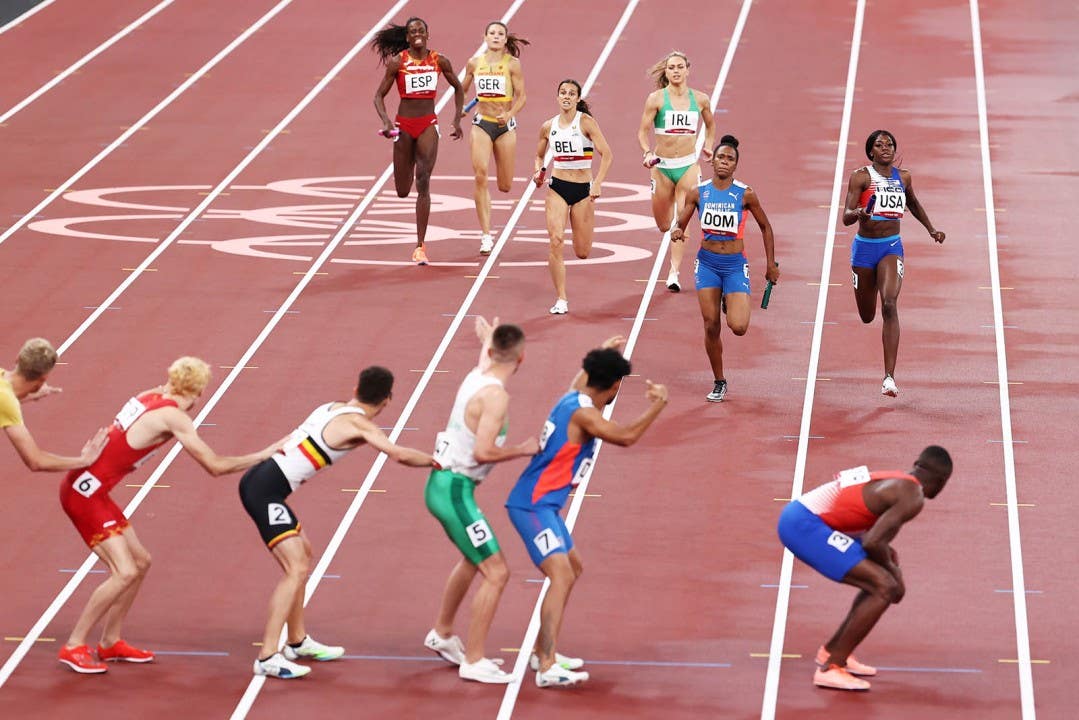AI can now detect if athletes are doping with remarkable accuracy
A newly developed software could play a crucial role in addressing doping concerns in future competitions, such as the Olympics.

In the Olympics, the question of whether victories are achieved fairly or through doping often arises. (CREDIT: CC BY-SA 3.0)
Athletes from all over the world are currently competing in the Olympic Games in Paris, striving for the honor of winning medals. However, the question of whether these victories are achieved fairly or through doping often arises. A groundbreaking software developed by Wolfgang Maaß, a professor of business informatics at Saarland University, could play a crucial role in addressing these concerns in future competitions.
This software, which is being showcased at the International Joint Conference on AI in South Korea, promises to predict with remarkable accuracy which athletes have likely not doped, enabling authorities to focus their investigations on cases where further scrutiny is needed.
Detecting doped athletes is akin to searching for a needle in a haystack. With thousands of participants at major events like the Olympics or World Championships, and even in professional leagues such as football, the process of analyzing urine samples in laboratories can take weeks.
"Currently, all samples are analyzed manually," said Wolfgang Maaß, who also serves as the Scientific Director of the Smart Service Engineering research department at the German Research Center for Artificial Intelligence (DFKI).
Given the vast number of athletes—approximately 10,500 in Paris—and the labor-intensive nature of existing testing methods, it’s evident that many cheaters manage to evade detection. Only a small percentage of urine samples can be thoroughly analyzed in laboratories. The 2014 Winter Olympics in Sochi provided a stark example, where some athletes attempted to swap their urine samples with those from someone else to evade detection.
Until now, DNA analysis has been the most reliable method to confirm whether samples have been tampered with. 'But that’s both expensive and time-consuming,' Maaß explained. It’s impractical to conduct DNA tests on every single sample.
Recognizing the need for a more efficient solution, Maaß and his colleagues from DFKI, the German Sport University Cologne, and the World Anti-Doping Agency (WADA) combined their expertise to develop a better approach. 'This problem is practically crying out for machine analysis,' he stated.
Related Stories
The result of their collaboration is a software that leverages artificial intelligence to analyze urine sample data rapidly and cost-effectively. 'Doping tests measure the concentrations and ratios of various steroids, which are then checked for plausibility,' Maaß explained. This process generates a biochemical fingerprint that the AI software uses to detect any anomalies.
The program requires data from just three urine samples collected from each athlete over their career. Since the natural steroid profile varies significantly between individuals, the program learns the specific patterns typical for each athlete.
For every sample, seven characteristics, including steroid concentrations and their ratios, are measured in a biochemical lab. Similar to how one might compare pictures to spot differences, the software identifies deviations from the expected pattern.
"By comparing the data from the three or more samples, the software identifies the ones where everything matches," Maaß said, simplifying the software’s operation. This process leaves a few samples with detected inconsistencies.
"The small number of remaining cases can then be examined in more detail by biochemists using DNA analysis. If an athlete has taken a performance-enhancing substance detectable in urine, our software can help identify them with a high degree of certainty," he added.
The software is not designed to catch doping offenders directly but rather to identify clean athletes with 99 percent confidence, ensuring that innocent athletes are not wrongly accused. While this approach means a few doping offenders might slip through, the program reliably flags cases for further investigation.
"Anyone who has doped can almost certainly be found among these remaining cases, which can then be investigated in more detail using DNA testing," Maaß explained.
This innovative method significantly improves the chances of finding that elusive needle in the haystack, making it easier to ensure fair competition in sports.
Note: Materials provided above by The Brighter Side of News. Content may be edited for style and length.
Like these kind of feel good stories? Get The Brighter Side of News' newsletter.
Joshua Shavit
Science & Technology Writer | AI and Robotics Reporter
Joshua Shavit is a Los Angeles-based science and technology writer with a passion for exploring the breakthroughs shaping the future. As a contributor to The Brighter Side of News, he focuses on positive and transformative advancements in AI, technology, physics, engineering, robotics and space science. Joshua is currently working towards a Bachelor of Science in Business Administration at the University of California, Berkeley. He combines his academic background with a talent for storytelling, making complex scientific discoveries engaging and accessible. His work highlights the innovators behind the ideas, bringing readers closer to the people driving progress.



